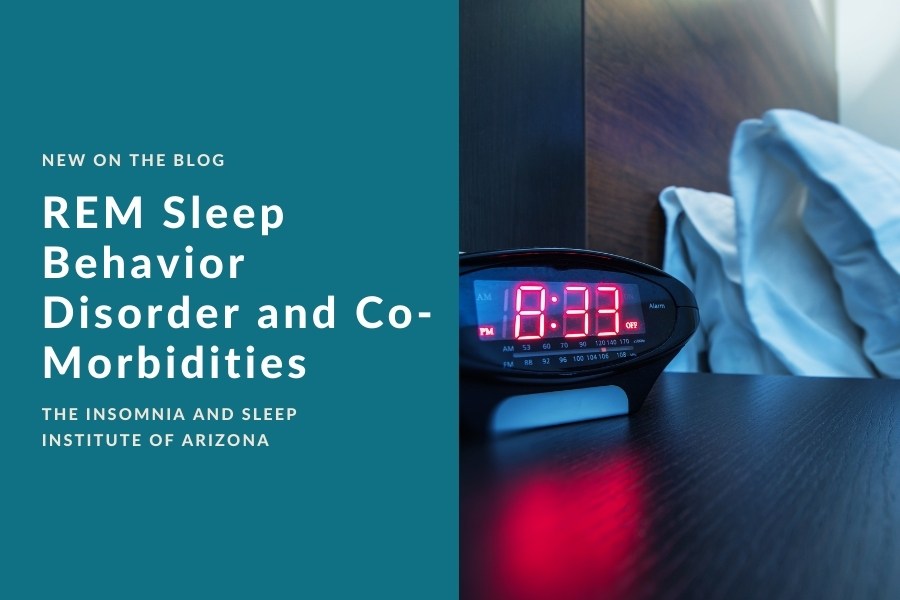Sleep disorders like REM Sleep Behavior Disorder (RBD) inherently have co-morbidities, with recent studies exploring the link between PTSD and Parkinson’s Disease. The Insomnia and Sleep Institute of Arizona is home to leading sleep specialists. You will always have an initial consult with a sleep expert who can provide a correct diagnosis, which is critical for next steps such as testing and treatment. Your RBD Phoenix facility is outcome-driven and home to unprecedented staffing levels, including three on-site clinical psychologists.
When it comes to REM Sleep Behavior Disorder, a new study from the BA Portland Health Care System and OHSU published in SLEEP found that military veterans diagnosed with PTSD or concussions have a much higher rate of a “thrashing form of sleep behavior” compared to the general population. The next step, according to researchers, is to examine if REM Sleep Behavior Disorder might serve as an early sign of the development of conditions like Parkinson’s disease.
The REM Connection
When a person is in REM sleep, their muscles are in some sense paralyzed. However, when RBD is present, the capability of the brain to control the muscles is also impaired. The end result is a person physically acting out their dreams while in REM. This has led to injuries. Such a disorder is relatively rare, affecting less than one percent of the population, but of course, seems to be highly prevalent in some populations such as those with PTSD.
The research shows that RBD is found in 9 percent of the 394 veterans included in the study overall. That figure skyrocketed to 21 percent in veterans with PTSD. The senior author Miranda Lim stresses, “This is important because, in the general population, RBD has been linked to Parkinson’s disease, and RBD often precedes classic symptoms of Parkinson’s by years. We don’t know whether veterans who have PTSD and higher rates of RBD will go on to develop Parkinson’s, but it is an important question we need to answer.” It is theorized that a brain under chronic stress plays a role in the development of RBD—plus, concussions may speed up neurodegenerative processes that cause diseases like Parkinson’s.
Study Details
Although the study was small, it is indicative of a serious disparity. Every participant in the veteran study underwent an overnight sleep study at the VA Portland sometime between 2015 – 2017 to see if there was any dream enactment during REM. The muscle activity was analyzed throughout the eight-hour sleep test. It was found that those with PTSD had more than two times the increased occurrence of RBD compared to those without PTSD. Another study author, Jonathan Elliott, says, “RBD seems to be highly prevalent in veterans with a history of trauma.”
The study is going to continue with a variety of experts tracking the participants with RBD. They are especially looking for signs of Parkinson’s disease. In actuality, Parkinson’s disease is two diseases and can start in the brain or intestines. One study published in Brain highlights this reality, which further explains why those with Parkinson’s have such a variety of symptoms. This finding was supported by scanning techniques that detail the two variants of the diseases.
Treating Sleep Disorders
Does treating RBD minimize or delay the onset of Parkinson’s disease? That has yet to be determined. However, what we do know is that any sleep disorder is going to reduce overall health and wellness. There are a number of treatments for sleep disorders like RBD, from cognitive behavioral therapy to prescribed medications. If you have RBD or suspect that you do, getting help immediately is critical for your well-being.
Of course, a person does not have to have PTSD or a concussion history to develop RBD. As we have seen, it does exist in the general population—albeit at a small percentage. One of the most difficult barriers for many people is getting a correct diagnosis, and we make it streamlined by not needing a referral to see one of our sleep specialists. Get in touch with The Insomnia and Sleep Institute right now by calling the office or completing the online form.





